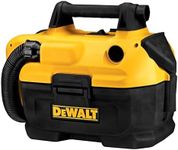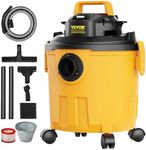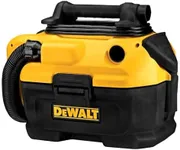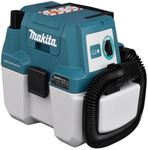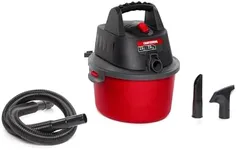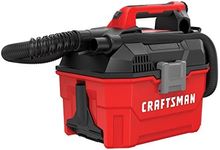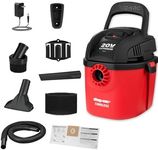Buying Guide for the Best Cordless Shop Vac
Choosing a cordless shop vac can make cleaning up messes in your garage, workshop, car, or home much more convenient. Since these vacuums run on batteries, you don’t have to worry about finding a power outlet or dealing with tangled cords. The right cordless shop vac for you will depend on where and how you plan to use it, the types of messes you need to clean, and how much portability you require. Understanding the key features will help you make a smart choice that fits your needs.Battery LifeBattery life refers to how long the shop vac can run on a single charge. This is important because it determines how much cleaning you can do before needing to recharge. Battery life is usually measured in minutes, and you’ll find models that last anywhere from 10 minutes to over an hour. Shorter battery life is fine for quick cleanups or small jobs, while longer battery life is better if you plan to use the vac for bigger messes or in places where recharging isn’t convenient. Think about how long your typical cleaning session lasts and choose a model that can handle it without frequent stops.
Suction PowerSuction power tells you how strong the vacuum is at picking up dirt, dust, and debris. This is usually measured in air watts or similar units. Higher suction power means the vac can handle heavier or more stubborn messes, like sawdust or small screws, while lower suction is fine for lighter tasks like dust or crumbs. If you need to clean up after DIY projects or in a workshop, look for higher suction. For lighter, everyday messes, a lower-powered model will do the job and may also be quieter and more energy-efficient.
Tank CapacityTank capacity is the amount of dirt, dust, or liquid the shop vac can hold before you need to empty it. This is usually measured in gallons or liters. Smaller tanks are lighter and easier to carry, making them good for quick jobs or car cleaning. Larger tanks can handle bigger messes and mean you won’t have to stop as often to empty the vac, which is useful for garage or workshop use. Consider how much debris you usually need to clean up and pick a size that matches your needs without being too bulky.
Weight and PortabilityWeight and portability describe how easy it is to move and carry the shop vac. Lighter models are easier to carry up stairs, move around your car, or use in tight spaces. Heavier models may have more power or a bigger tank, but can be harder to move, especially if you need to use the vac in different locations. If you plan to carry the vac around a lot, look for a lightweight design with a comfortable handle or wheels.
Attachments and AccessoriesAttachments and accessories are the extra tools that come with the shop vac, like crevice tools, brushes, or extension wands. These can make it easier to clean different surfaces or reach tight spots. If you need to clean upholstery, car interiors, or corners, look for a model with the right attachments. Think about the types of messes and surfaces you’ll be cleaning most often and make sure the vac comes with tools that match your needs.
Wet/Dry CapabilityWet/dry capability means the shop vac can handle both dry debris and liquid spills. This is important if you expect to clean up water, mud, or other wet messes in addition to dust and dirt. Some models are only for dry use, while others can handle both. If you want a versatile vac for all kinds of messes, make sure it’s rated for wet and dry use.
Charging TimeCharging time is how long it takes to fully recharge the battery. Shorter charging times mean you can get back to cleaning sooner if the battery runs out. If you plan to use the vac often or for long periods, a model with a quick-charging battery can be more convenient. Consider how often you’ll use the vac and whether waiting for a recharge will be an issue for you.
